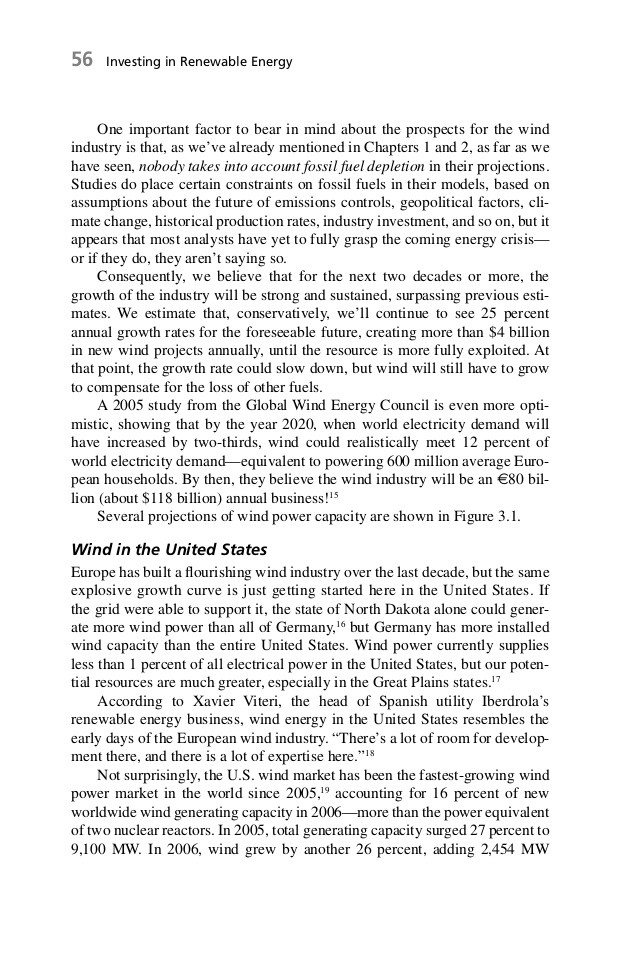GE 2007 Annual Report Investor Letter Global Warming Clean Energy
Post on: 16 Март, 2015 No Comment

Breadcrumb Navigation
Winning in the Essential Themes
Last year I described our investments in six strategic themes that could propel our growth for decades. These included infrastructure technology, emerging markets, environmental solutions, demographics, digital connections, and creating value from origination .
Our thesis was that each of these themes was essential in the development of the world, and that GE could create a profitable future for our investors, our customers, and society. I would like to give you an update on our progress in two of these themes.
In 2004, we launched our program in environmental solutions. called ecomagination SM. We believed that energy shortages and environmental concerns would challenge our customers and, more broadly, society. We had explored other corporate social programs on the environment and decided they were not for us. Our program needed to be an edgy initiative grounded in business principles with hard metrics, customer commitments, and technology investments. We wanted to use our brand and technology to become a catalyst for broader change, while making money for our investors.
This approach is working. Our original goal was to grow revenues from ecomagination products from $6 billion in 2004 to $20 billion in 2010. We were at $14 billion in 2007 and will cross $20 billion by 2009. Every GE business is participating. We have created more than 60 ecomagination products that produce cleaner energy and water or improve efficiency. In the near future, GE will launch technologies ranging from advanced coal gasification to thin-film solar panels to a hybrid locomotive. We will invest $6 billion to finance renewable energy projects around the world. We have multiple projects underway with our global rail, airline, and utility customers who will be impacted by changes in energy cost and regulations. Our goal is to support our customers aspirations for cost reduction, compliance, and reputation.
Customer partnerships are at the center of ecomagination. A good example is Waste Management, whose Think Green business strategy aligns with a number of GE businesses. Our companies share a commitment to sustainable, organic growth built upon industry expertise and strong technology. Our collaboration will grow to include GE Jenbacher gas engines that burn landfill gas, land use for wind- and solar-power generation, hybrid commercial vehicles, and emerging waste-conversion technologies that produce electricity or synthetic fuels.
Ecomagination has become a global brand, symbolic of innovation at GE. We are viewed as a technical partner by customers around the world. We have engaged with governments to drive public policies that create a framework to address global warming and energy security. Due to our early success, we have raised our ecomagination revenue target from a $20 billion goal to $25 billion by 2010.
Similarly, we have been building leadership in emerging markets for the last decade. It was our belief that the combination of population growth, raw material inflation, and improved governance could lead to rapid expansion in these markets. Today, the growth rate of emerging economies is four times that of the U.S. Their governments are investing in massive infrastructure projects that will drive local consumption. GE is well-positioned to meet this demand. Our growth rate has averaged 20%, and we should have $40 billion of emerging market revenue in 2008.
You have heard me talk in the past about our unique company-to-country approach to emerging markets. This allows us to use the breadth of a multi-business company to increase sales. Perhaps the preeminent company-to-country relationship is the Beijing 2008 Olympic Games. The Games will be a showcase for GE to combine the presence of our global entertainment franchise with the value of our infrastructure technology. GEs leadership position in the Olympics will create $2 billion of revenues in 2008 and decades of goodwill in China.
We are building great customer relationships with some of the largest companies in the emerging markets. Mining customers plan to invest $200 billion in capital equipment in the next five years. We see an opportunity and believe that mining could be a $1 billion business for GE by 2010. It is dominated by seven big players, none of whom have U.S. headquarters. Vale is a great Brazilian mining company with whom we recently committed to a multi-year technical development agreement in Transportation, Energy, and Water. BHP Billiton, a global mining leader headquartered in Australia, is working with GE on a comprehensive environmental solutions initiative.

An important part of satisfying our customers in emerging markets is developing unique products to meet their needs. We have a pipeline of high-tech, low-cost products for our customers, designed and produced in their countries. Our Healthcare business develops products in six emerging markets, where we have close to 2,000 engineers. They launch approximately 30 high-tech, high-quality products every year. Recently, we initiated a program to serve primary-care clinics in Turkey using portable ultrasound, mammography, and X-ray technology. These initiatives are an integral part of improving the healthcare systems in emerging markets.
China and India are the biggest emerging markets, and are essential to GE. But we see that the Middle East and Africa are changing even more rapidly. GEs revenues in the region will grow from $5 billion in 2006 to $13 billion in 2010. Here we win by being a local player. We are building plants to manufacture healthcare products in Saudi Arabia to address a $20 billion market in the region by 2010. At the Dubai Air Show last November, GE captured $10 billion of commercial engine wins from Middle Eastern airlines. We are building equipment-servicing shops in Algeria, Angola, Qatar, and Abu Dhabi.
Growth in environmental solutions and emerging markets is exhilarating and essential to the economic future of the world. But leading in these themes can be difficult for U.S. companies. Many still believe that there is not a need for clean energy, or that global warming is a hoax. Furthermore, globalization remains controversial. Some prefer to focus on the challenges of globalization rather than the opportunities created by it.
But we remain advocates for change. To accelerate investments in clean energy and environmental solutions, we have asked governments around the world to put in place targets for greenhouse-gas emissions reduction and incentives for new clean energy technologies. To facilitate growth around the world, we have advocated for open markets that operate with high standards of conduct, product quality, and respect for workers.
Creating the future requires technology and reputation. We have never hesitated to use our good name in causes we believe are good for the world and for GE investors. And the payoff for you is substantial: ecomagination revenues are expected to grow from $6 billion in 2004 to $25 billion in 2010; emerging market revenues will grow from $19 billion in 2004 to almost $50 billion in 2010. This is $50 billion of revenue growth for GE in a relatively short time period.
Scale can be an advantage for growth. By investing in these strategic themes, we make our size an advantage and give our Company an enduring purpose.














